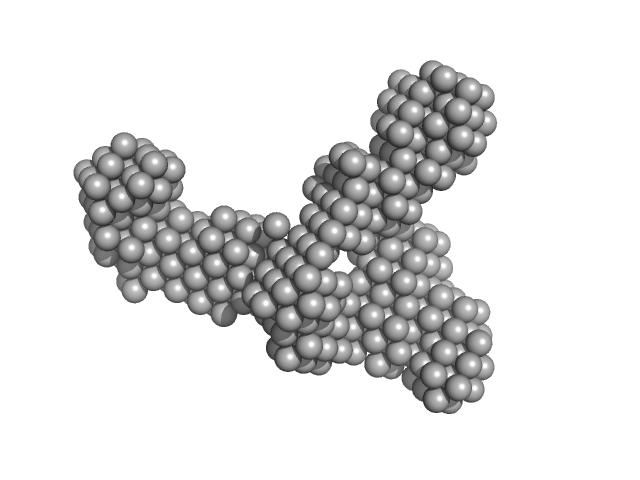|
SAXS data from solutions of HSP40 in 50 mM Tris, 5 mM MgCl2, 300 mM KCl, 1 mM β-mercaptoethanol, 5% glycerol, pH 8 were collected using an Anton Paar SAXSpace instrument at the CSIR-Central Drug Research Institute (Lucknow, India) using a Mythen2 R 1K detector at a sample-detector distance of 0.3 m and at a wavelength of λ = 0.154 nm (I(s) vs s, where s = 4πsinθ/λ, and 2θ is the scattering angle). One solute concentration of 9.00 mg/ml was measured at 10°C. Two successive 1800 second frames were collected. The data were normalized to the intensity of the transmitted beam and radially averaged; the scattering of the solvent-blank was subtracted.
Based on the primary protein sequence, the predicted molecular weight of HSP40 dimer is 96.8 kDa. Whereas, through gel filtration, we observe the molecular weight to be 88.1 kDa. This difference could be due to structural rearrangements of domains in HSP40 dimer. The models presented are: Top; an individual DAMMIF model (and associated fit to the data) and; Bottom, a volume and spatial occupancy representation based on the spatial alignment of several individual DAMMIF models (damfilt).
|
|
 s, nm-1
s, nm-1

